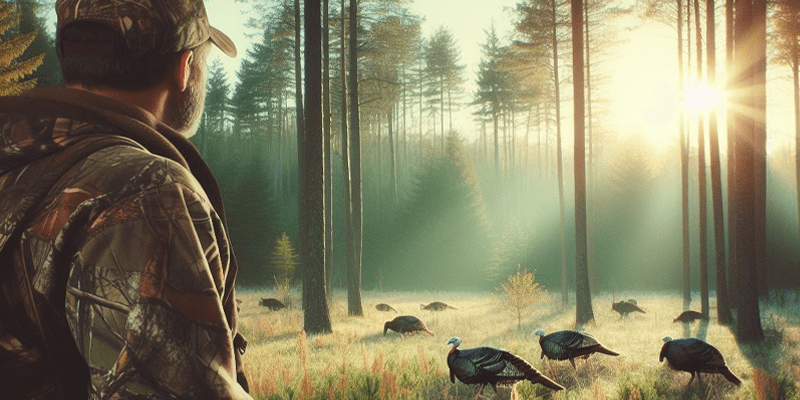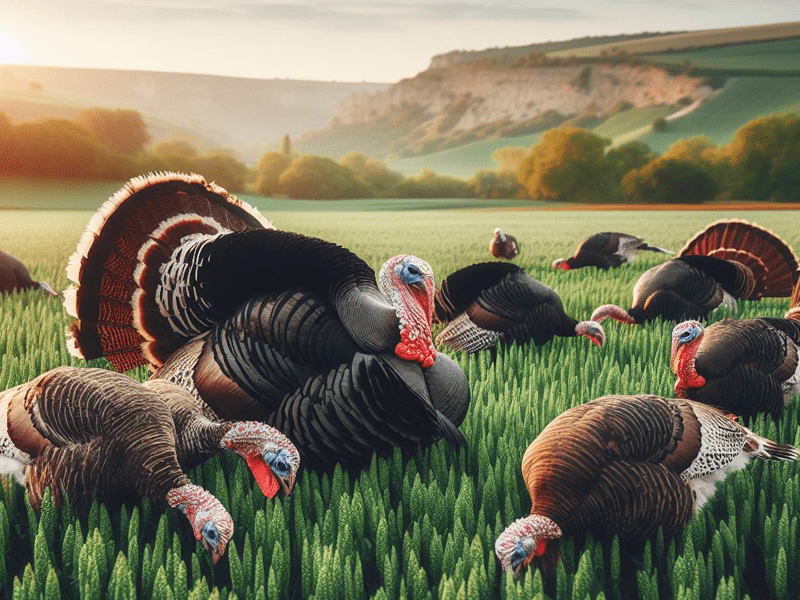Turkey hunting is not just a sport; it’s a strategic pursuit that requires a deep understanding of the game. Many hunters appreciate the importance of scouting but often struggle with the intricacies of how to transform observations into a plan that leads to a successful turkey harvest.

Drawing on insights from seasoned hunters, this article unveils the art of mastering turkey scouting, providing a comprehensive guide to elevate your spring hunts.
Related Post:- Best Life-Like Turkey Decoys
Related Post:- Best Turkey Call
Section 1: Understanding the Importance of Scouting

While many hunters can spot turkeys, mastering scouting involves going beyond mere observation. Successful turkey hunters share a common trait: the ability to predict turkey behavior and adapt swiftly. This skill comes from years of experience and seasons dedicated to scouting.
Section 2: When to Start Scouting for Turkeys
Scouting is a year-round activity, and understanding the distinct characteristics of each season is crucial. In winter, large flocks of turkeys gather, roosting in sheltered areas. As winter transitions to spring, these flocks disperse, making scouting during this period essential.
The week before the season opens is a prime time for scouting, providing insights into gobbler patterns. During the turkey season, continuous scouting becomes a balancing act between gathering information and actively hunting.
Section 3: How to Scout for Turkeys

3.1 Scouting Winter Turkeys
In winter, turkeys congregate in large flocks. Understanding their roosting preferences and feeding habits during this season lays the foundation for successful scouting. While winter flocks disband, finding wintering grounds helps predict spring turkey locations.
3.2 Scouting Before the Season
The week before the season opens is a hunter’s golden opportunity. Roosting gobblers a few days before the opener and refining plans can significantly increase the chances of a successful opening day.
3.3 Scouting During the Turkey Season
While hunting picks up, scouting remains essential. The article stresses the balance between scouting and hunting, dispelling the misconception of sacrificing scouting time for immediate hunting gratification.
Section 4: How to E-Scout for Turkeys

Modern technology has transformed scouting with digital mapping apps like onX and HuntStand. This section details how hunters can use these tools to identify potential hunting spots, even on public land.
Section 5: How to Read Turkey Sign
Understanding the turkey sign is an art. From tracks to scat, scratching, and dusting sites, hunters learn to interpret the language of turkeys. The section emphasizes the importance of these signs in building a holistic scouting understanding.
Section 6: Finding Where Turkeys Roost

Elaborating on the characteristics of common turkey roost sites, this section guides hunters on locating roosted turkeys during scouting missions. The emphasis is on understanding roost dynamics and avoiding spooking birds.
Section 7: Finding Turkey Feeding Areas

This section provides insights into turkey feeding behavior, including their preferences for fields, vegetation, and alternative feeding areas. Practical methods for identifying and scouting major feeding areas are discussed.
Section 8: Finding Turkey Travel Routes
Understanding the path of least resistance for turkeys is crucial. This section explores the significance of identifying and utilizing turkey travel routes, offering effective strategies for locating and monitoring them during scouting.
Section 9: Turkey Scouting Tips

Common mistakes in turkey scouting are addressed, such as excessive calling and disruptive scouting practices. The section highlights the importance of quiet, sneaky scouting behavior and emphasizes the value of listening to natural sounds.
Section 10: How to Scout for Turkeys on Public Land

Scouting public land presents unique challenges. This section guides hunters through the process, encouraging them to identify less-explored areas, scout effectively, and collaborate with other hunters to maximize scouting results.
Conclusion:
In summary, mastering turkey scouting is a holistic process that involves understanding the nuances of turkey behavior throughout the year. By combining traditional scouting methods with modern technology and a deep appreciation for turkey signs, hunters can develop a strategic plan for a successful spring turkey hunt. As you venture into the woods, armed with knowledge and experience, may each scouting mission bring you closer to the thrilling moment when you outsmart that elusive gobbler. Happy hunting!

 T-Shirts
T-Shirts Long Sleeves
Long Sleeves Hoodies
Hoodies Sweatshirts
Sweatshirts

 Baby Bodysuits
Baby Bodysuits
 Cap
Cap












